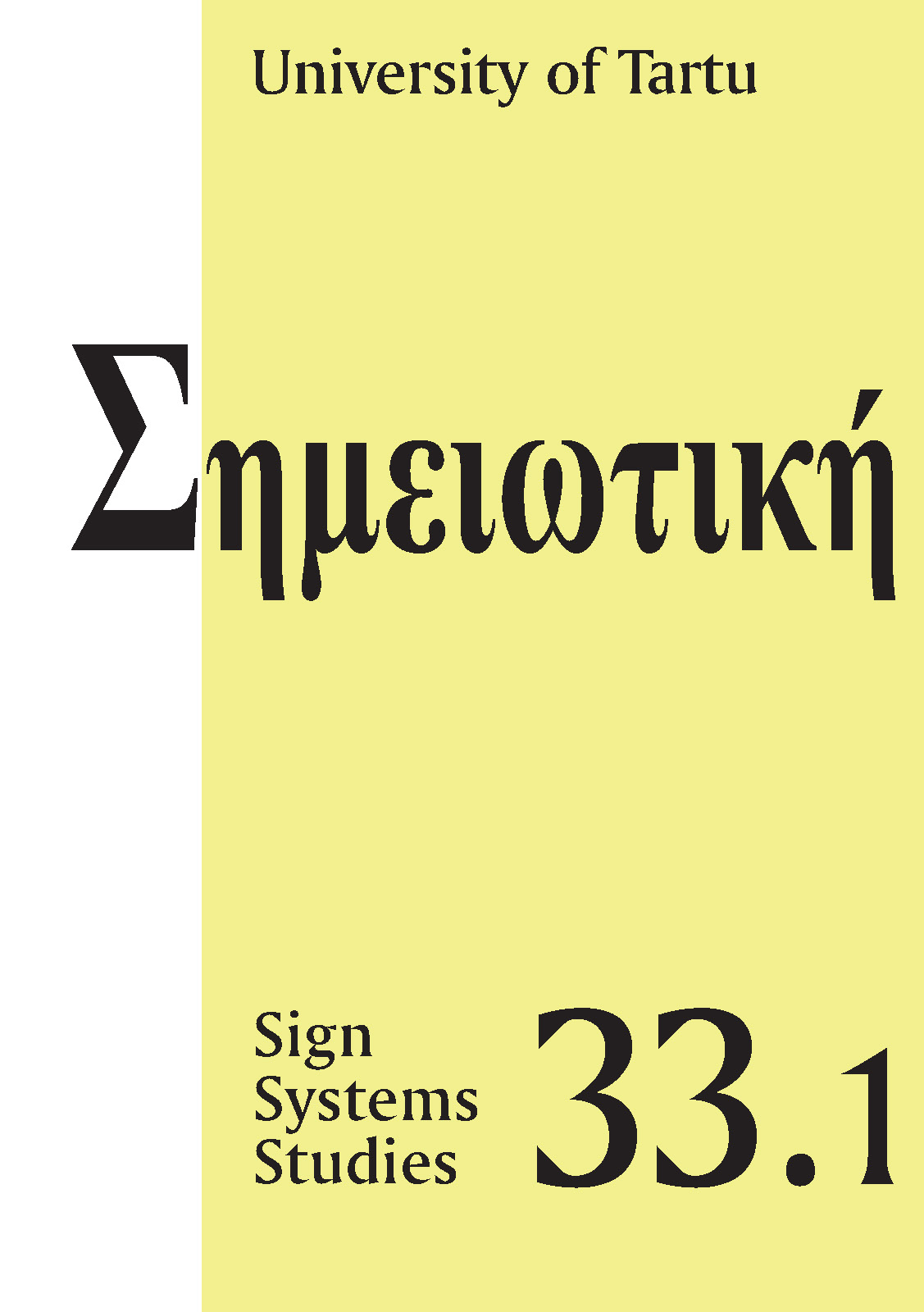Perceptographic code in visual culture
DOI:
https://doi.org/10.12697/SSS.2005.33.1.05Abstract
Visual culture can be considered from semiotic point of view as a system of visual codes. Several of them have natural routs. So the perceptual code is formed already on biological level mediating translation of sensory data into perceptual images of the spatial world. The means of natural perceptual code are transformed in culture, where they are involved in communication by depictions. The depiction on the flat performs the function of a “perceptogram”, which, on one hand, is an external record of an internal perceptual image or an idea, and, on the other hand, serves as a program for a spectator’s visual perception. The means of this “perceptography” form an artificial code, which is, on the contrary to the perceptual code, communicative, deliberately used and transformed in various ways at different periods of time in diverse kinds of practical and artistic activity. Not all perceptograms become pieces of art, but all history of pictorial arts can be considered as a process of development and mastering with the different versions of this perceptographic code. The changes of this code in visual culture are connected with the intrinsic development of “vision forms” as well with invention of external means of communication.


